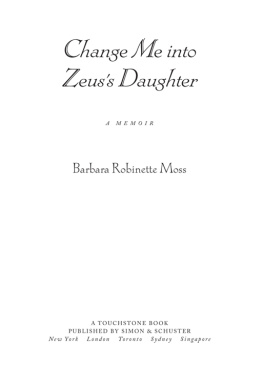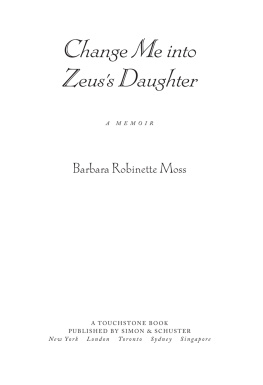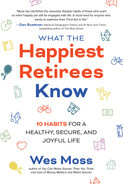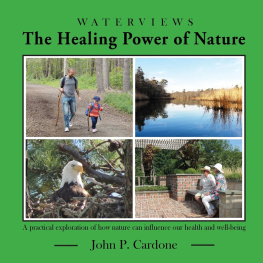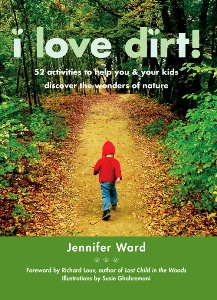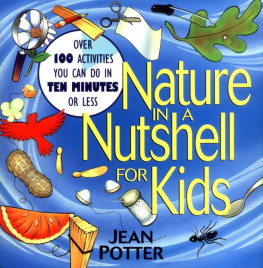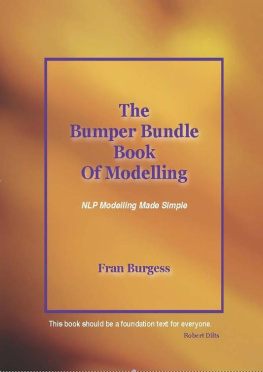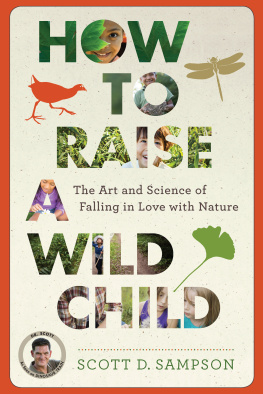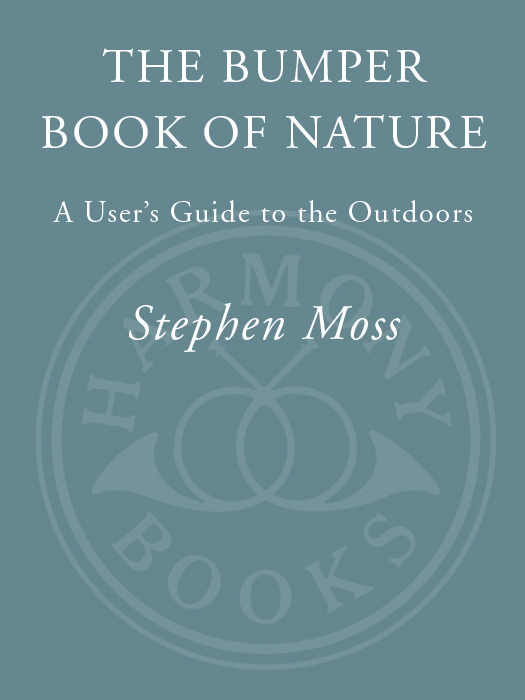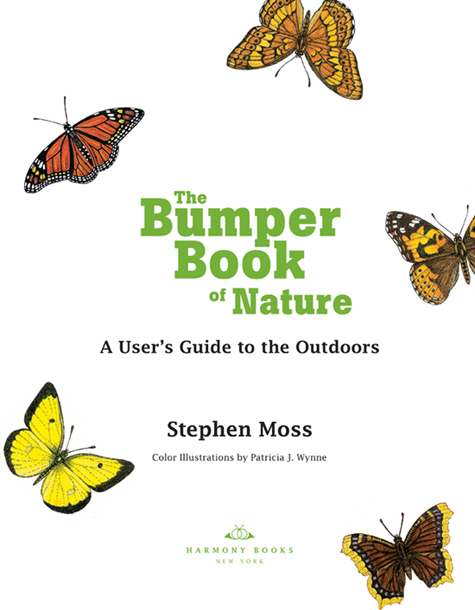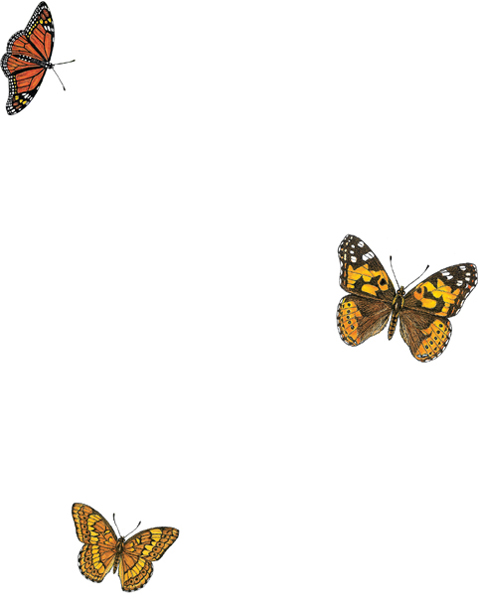

For David and Martine Osario,
for allowing us to be free-range children
instead of cotton-wool kids
Contents
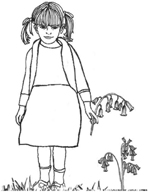
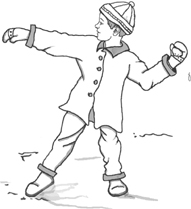
A note to parents
(and grandparents, godparents, aunts and uncles, big brothers and sisters, friends of the family, teachers, and anyone else who wants to get our children back in touch with nature )
When you think back to your own childhood, what do you remember? Did you climb trees, build dens, and go for hikes in the woods? Of course you didthats how we entertained ourselves in the days before computer games, cell phones, and a TV in every childs bedroom.
We didnt have the gadgets, the opportunities, or the sheer variety of ways that todays children have to spend their spare time. So to stave off boredom, we begged our parents to let us go and play outside. Ball games in the street were just the start. Soon we were scrambling over the fence and into the woods, exploring nature for ourselves. Later on, during summer vacation, we were sent out with Moms words ringing in our ears : Take careand be back home for supper!
OK, so Im making our childhoods sound like something out of Hiawatha or Anne of Green Gables. It wasnt always like that, of course. Sometimes we hurt ourselvesfalling out of trees or grazing our knees. Sometimes we came home soaked through after being caught in the rain, and got a good telling off from Mom and Dad.
But all this time we were learning about nature: seeing tadpoles turn into frogs, picking flowers, or simply watching the birds we came across in our wanderings. And by climbing trees and building dens we also learned about taking risks, about working together as a team, and ultimately about our own limits.
So tell me, honestly: are todays children happier and more fulfilled than we were? Of course they arent. In the past couple of decades, we have raised generations of children who are scared to walk in the park on their own, who scream when they encounter a spider or a moth, and who know more about the characters in TV shows than they do about our native animals and plants.
The consequences of thiswhat Californian writer Richard Louv has called Nature Deficit Disorderare very worrying. If were not careful, when these children grow up, they will have no interest in, or passion for, the natural worldand if you dont care about something, what incentive is there to protect it?
So what can we do to get our children back in touch with nature? Well, for a start I hope you, and any children you know, will use this book to get out and experience the wonders of the natural world for yourself. This isnt hardthere are many things you can do in any backyard, or even in a town or city park. There are things you can do as a family, or that your children can do on their own or with their friends. And there are organized activities, too, which are best enjoyed in the company of a knowledgeable expert.
Ive arranged the activities into seasons, along with a substantial section of things you can do all year round. Ive tried to be as specific as possible. If you already know how to climb a tree, then you can skip the directions, but if its the first time your children are attempting it, there are step-by-step instructions on the best way to do so.
To help you identify the animals and plants you see, Ive included identification guides to common species, beautifully illustrated by some of our finest wildlife artists. And there are poems, fascinating facts, and snippets of folklore to keep you and your children entertained.
At the end of the book there are contact details of organizations, website addresses, and a selection of books to help you extend your and your childrens knowledge of Americas wonderful natural heritage.
So please dont put The Bumper Book of Nature away on a bookshelf and let it gather dust. This is a book to be used. Take it outdoors and get muddy fingerprints on its pages. It is, I hope, a book for lifesomething you can enjoy with your children as they grow up, and which they may perhaps even use one day to introduce their own children to wildlife.
I am a very lucky man. When I was a child, I learned to explore the world around my home. I walked under blue suburban skies, built dens in the scrubby woods behind our house, played around the local gravel pitsand because of all this I developed a love of nature. In later life, I became one of those very fortunate people whose lifetimes passion is also their job, as the producer of television nature programs. I owe all this to one simple thing: when I was growing up I was given the freedom that so many parents now deny their own children.
So now I want you to close your eyes and imagine a world where sending your child out into the natural world is a matter of course rather than a special event. And instead of preprogramming their every move and organizing their every moment, you give them one simple instruction: Just enjoy yourself!
A note to children
If someone has given you this book, they must know that you are interested in naturein birds and bees, foxes and frogs, and many other wonderful wild creatures.
But when was the last time you went outside and discovered nature for yourselfon your own or with your friends? Never? Maybe your parents are worried that youll hurt yourself, or get dirty. Maybe you dont know where to go, or what to do, or how to tell what bird or flower you are looking at.
Thats where The Bumper Book of Nature comes in. This book is packed full of exciting things to doon your own, with friends, or with grown-ups. You can build a den, catch tadpoles, or pick blackberries. You can do something simple, like lie down in the long grass and look up at the sky, or a bit trickier, like keeping caterpillars and watching them turn into butterflies. You can do these things in your backyard, down at the local park, on a hike in the woods, or by the seaside, and in spring, summer, fall, and winter. Whatever the time of year, and whatever the weather, theres always something to see and do in the wild world!
To help you know what you are looking at, there are pictures of common animals and birds, plants and insectsso if you find a strange butterfly in your backyard, or see an unusual bird on the park pond, you can find out what its called. And at the end of the book theres loads of useful informationwebsites, books, and organizations you can join to help you make the most of your interest in nature.
So I hope you wont just put this book away on your bedroom shelf and forget about it. This is a book you need to use, to take outdoorseven to get dirty! Make sure you ask a grown-up before you do any of the activities here; and if they want to come with you, thats fine. But as you get older and more confident, ask them if you can go out with your friends and enjoy the natural world on your own.


